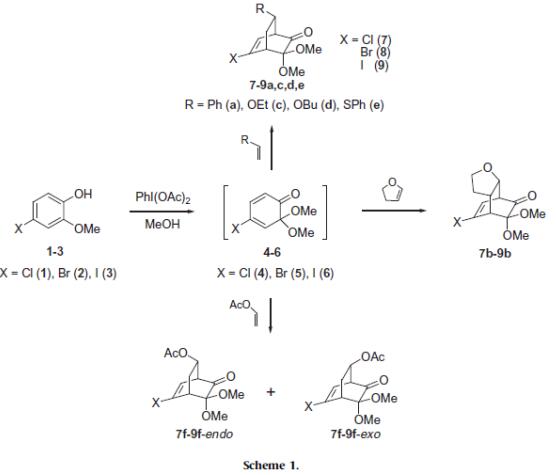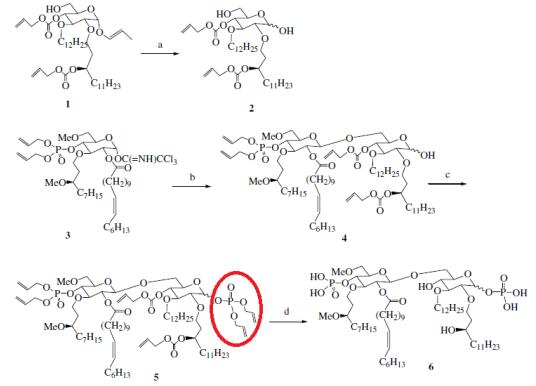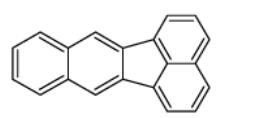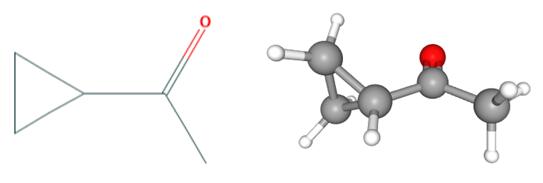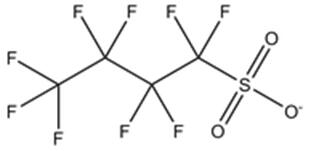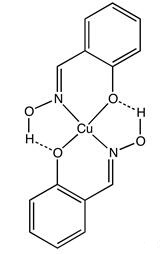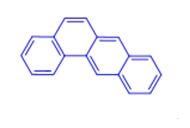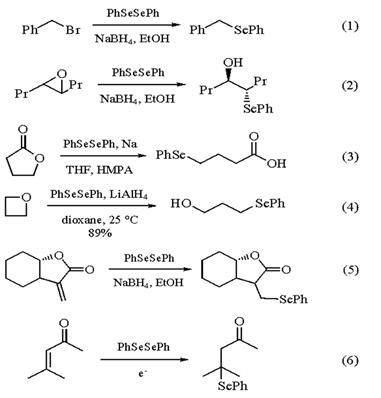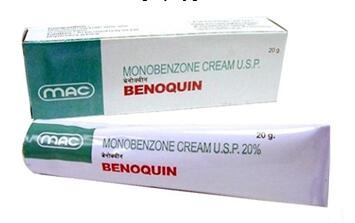From early AD to mid-19 century, people mainly use the natural organic substance (such as animal and plant extracts) for qualitative analysis or quantitative analysis. From the second half of the 19th century to the 1920s, it had begun to appear of artificially synthetic organic reagent such as using potassium acetate xanthan for test of nickel, copper, and molybdenum; using morin for test of aluminum; using diazo coupling reaction for the detection of Nitrite; using α-β-nitroso naphthol for detection of cobalt; using dimethyglyoxime for nickel test. After the proposal of the special-effects group in the 1930s and the proposal of theoretical analysis of functional groups theory in 1950s, people had carried out large-scale screen of organic reagents in search of special-effects analysis groups for different ions and had successfully synthesized a lot of agents of practical value (such as copper reagents, new copper agent, cadmium reagents, beryllium reagent, thorium reagents, etc.). Before the 1950s, the complex compound, in analytic chemistry, is mainly used in the aspects of the precipitation reaction of a binary chelate for the qualitative detection, precipitate isolation and gravimetric separation and other aspects. In the early 1950s and 1960, it is mainly in the form of complexometric titration. From the beginning of the late 1960s, the main focus has been moved to the photometric analysis. Meanwhile, it has been also developed of chelate organic solvent extraction.
What is 4-Bromo-2-methoxyphenol?
4-bromo-2-methoxyphenol is an important organic intermediate (building block) to synthetize substituted phenzyl products, and it can also be used for the synthesis of polyfunctionalized bicyclic syste
Feb 11,2020 Organic reagentsWhat is Diallyl n,n-diisopropylphosphoramidite?
Diallyl N,N-diisopropylphosphoramidite was employed as a phophorylating reagent. It can be used for reactions involved in phosphitylation and deallylation.
Feb 11,2020 Organic reagentsBioactivity of Benzo(k)fluoranthene
Benzo(k)fluoranthene was absorbed through the skin, lungs, and gastrointestinal tract. In industrial processes it is considered to be environmental pollutants.
Feb 11,2020 Organic reagentsWhat is Cyclopropyl methyl ketone?
Cyclopropyl methyl ketone is a molecule with two large-amplitude motions: a CH3 group rotation and an acetyl C(O)CH3 group rotation, which can be coupled.
Jan 16,2020 Organic reagentsToxicity of Potassium nonafluoro-1-butanesulfonate
Potassium nonafluoro-1-butanesulfonate (K+PFBS) is a four-carbon, fully fluorinated alkane members of a large and diverse class of linear and branched compounds known as polyfluoroalkyl substance.
Jan 14,2020 Organic reagentsWhat is Salicylaldoxime?
Salicylaldoxime is an organic compound described by the formula C6H4CH=NOH-2-OH and it is the oxime of salicylaldehyde. This crystalline, colorless solid is a chelator.
Jan 10,2020 Organic reagentsWhat is 1,2-benzanthracene?
1,2-Benzanthracene (C18H12, CAS registry No. 56-55-3) is colorless leaflets or plates or coarse gold powder with a greenish-yellow fluorescence. Its melting point is 159.8 °C and flash point is 209.1
Jan 7,2020 Organic reagentsWhat happens when Diphenyl diselenide encounters Nucleophilic Phenylseleno Reagents or Electrophilic Phenylseleno Reagen
Diphenyl diselenide(CAS: 1666-13-3) is the chemical compound with the formula (C6H5)2Se2, abbreviated Ph2Se2.
Jan 7,2020 Organic reagentsEthylene glycol monoethyl ether acetate(EGEEA)—a reproductive toxicant
Ethylene glycol monoethyl ether acetate (CAS: 111-15-9), also called EGEEA is used in automobile lacquers and also as a solvent for nitrocellulose, oils and resins.
Jan 7,2020 Organic reagentsAll you need to know about monobenzone(PBP)
Monobenzone (CAS: 103-16-2), also called PBP or monobenzyl ether of hydroquinone (MBEH) is an organic chemical in the phenol family with chemical formula C6H5CH2OC6H4OH.
Jan 7,2020 Organic reagents



